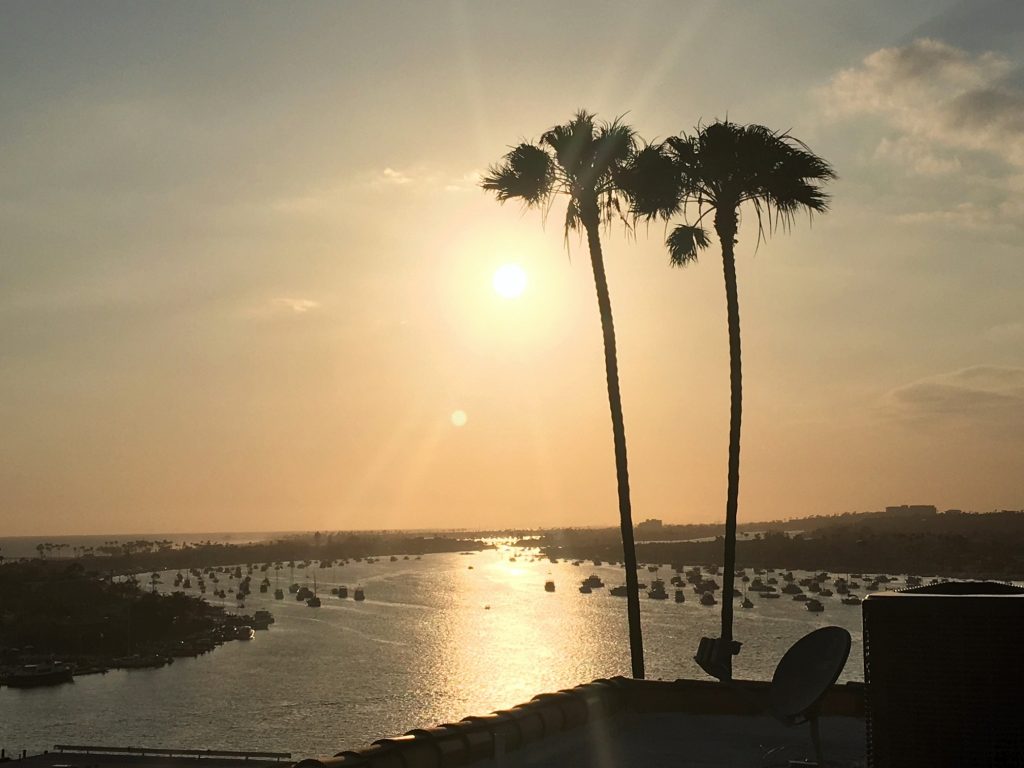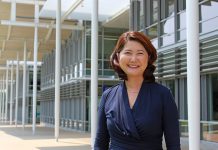
— Photo by Richard Umphrey ©
A pair of palms considered iconic by locals have caused a bit of controversy for residents in the Carnation Avenue neighborhood.
On Tuesday, the Parks, Beaches and Recreation Commission considered the removal of two Washingtonia robusta (Mexican Fan Palm) trees at 239 Carnation Avenue in Corona del Mar to allow a new home to be developed.
Commissioners voted 6-0 to recommend to City Council that the two palms be designated as “special” trees, and to direct the Public Works department to work with the homeowner and see if there is a plan that preserves the trees. The Commission’s intent is to keep the palms where they currently are or relocate them on the property in the same configuration. Commissioner Ron Cole was absent.
“These are obviously two trees that are very, very important to the people in this neighborhood, and (yet) they aren’t designated as special city trees,” Commissioner Tom Anderson said.
Locals and visitors identify the two 58-foot palms as an important part of the neighborhood and are worth protecting, Anderson said.
“That is, I think , the definition of a special tree,” he said.
The shape and configuration is what makes them unique, Commission Vice Chair Laird Hayes added.
The homeowner whose property borders the two Mexican fan palms wants to demolish the current single-level house and construct a new multi-level home on the site.
The project was approved by the California Coastal Commission in January.
Newport Beach Zoning Code requires that a home of this size (larger than 4,000-square-feet) include a (minimum) three car garage. However, because the property is so narrow (about 40 feet) the new layout of the house would require that the trees be removed in order to access the garage.
The Municipal Operations Director decided in February to allow the removal of the palms. The Palisades Condominium Homeowners Association appealed the decision, making a number of objections.
Although staff considered the palms “standard trees” under the G-1 city policy, the Association countered that they would fall under the definition for “neighborhood trees.” Others argued that because of their iconic silhouette and recognizable connection to the neighborhood they are “special” trees and should stay put. It has also been suggested that the trees could be relocated, in the same configuration, elsewhere on the property.
On July 5, the appeal was brought before the PBR Commission. Following public testimony, commissioners directed staff to meet with the property owner to determine alternatives.
A few days later, city staff met with Stephen Perkins, the owner of the property; Andrew Goetz, the architect of the project; Vince Mola, the contractor for the project; and John Mote of Senna Tree Company, who has experience in moving palm trees.
They discussed potential spots for re-location explained Municipal Operations Director Mike Pisani. The trees are “basically in the center,” he noted, and other locations on the property are not workable.
Pisani mentioned two alternative sites in the adjacent existing parkway on Seaview Avenue. Staff has yet to hear back from all the homeowners whose property lines are adjacent to the new proposed placement of the palms.
The property owner is willing to move the trees at his expense to a new location. They tried their best to make it work, Goetz said.
The homeowner has a reasonable right to build on his own property, Goetz added.
These palms are not designated as landmark, special or any kind of protected tree, Goetz pointed out.
The PBR decision on Tuesday directs staff to check with Public Works for a plan that preserves the trees, either with a waiver so that a three-car garage is not required or by some other means.
During public comment, nearly all speakers supported keeping the palms in place, several residents questioned whether or not staff was correctly interpreting the city policy in this particular case and a few provided possible alternatives.
Almost all the speakers emphasized the importance to preserve the palms. They asked the commission that if they must be replanted, that they stay close to the original location and that they maintain the framing shape and layout.
“They enhance our overall aesthetic,” said nearby Seaview Avenue resident Tim Stephens.
He has watched the trees grow and “they will live another 50 years if left alone,” Stephens said.
They welcome their neighbor and want to find a compromise, another local homeowner noted.
Seaview Avenue resident Richard Umphrey said he is opposed to moving, destroying, re-locating the palms.
“One of the things that attracted me to the neighborhood was the simplicity and beauty of it and nature of it, and, quite frankly, the two palm trees that we’re talking about were a part of that attraction,” he said.
He has a beautiful panoramic view of the bay framed by those two palm trees from the top deck of his home, Umphrey said. It creates a striking sunset scene.
“I never thought I’d be a ‘tree hugger,’” Umphrey said, “but I really do enjoy those trees.”
They also add value to the community, he added.
“I love those trees,” Seaview Avenue resident Bob Portale summed up. “Seeing those trees makes me feel like I’m coming home.”




